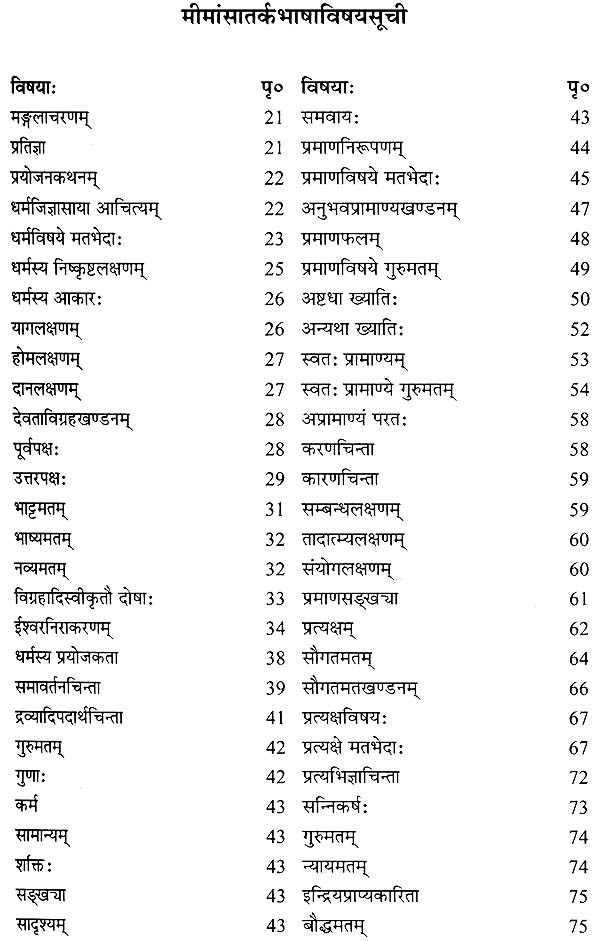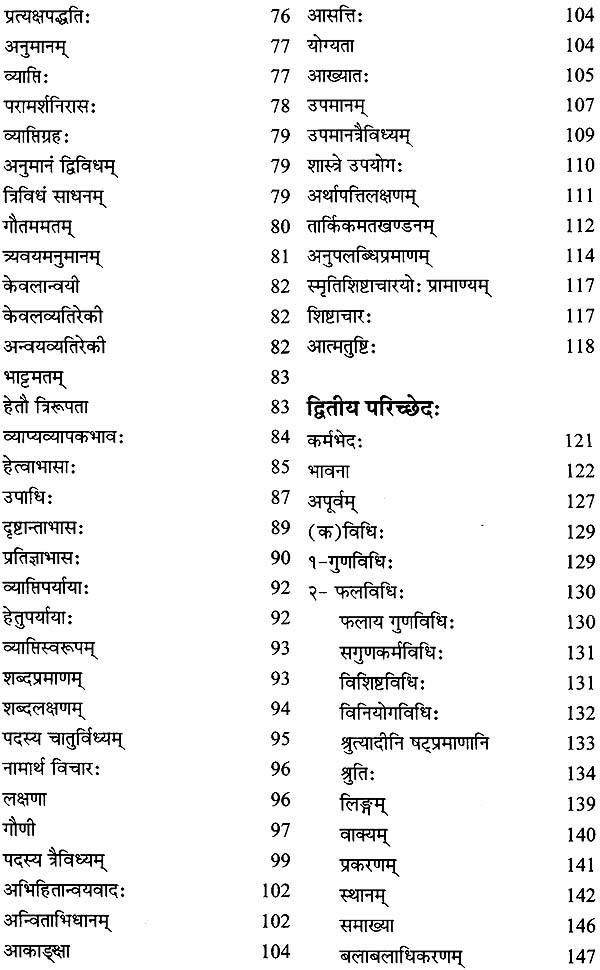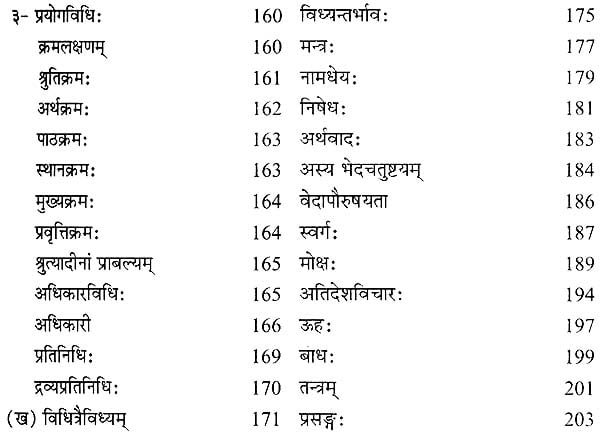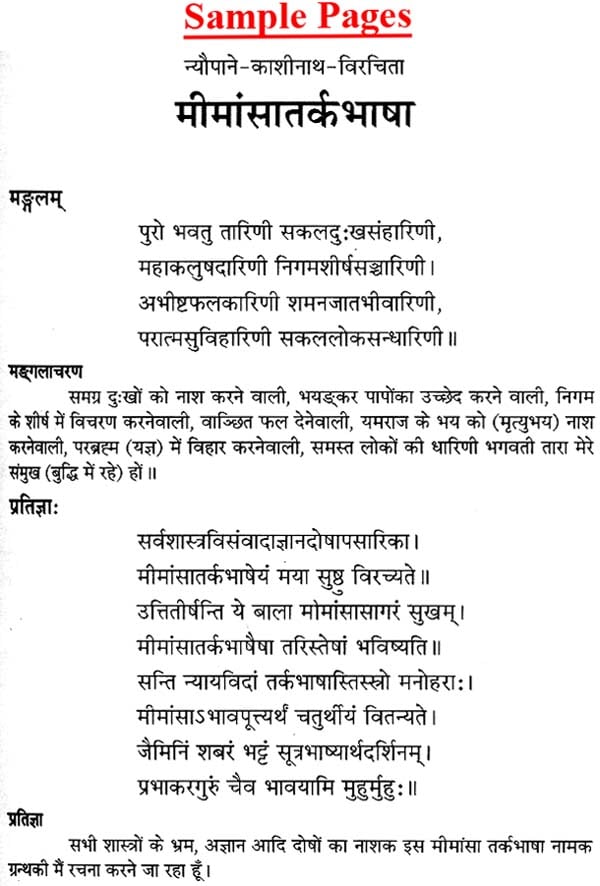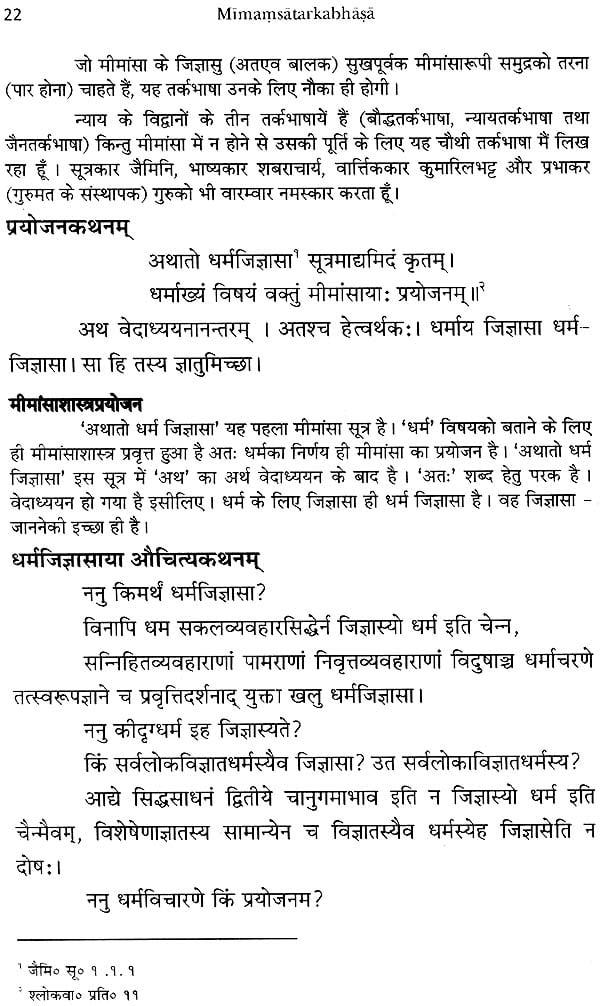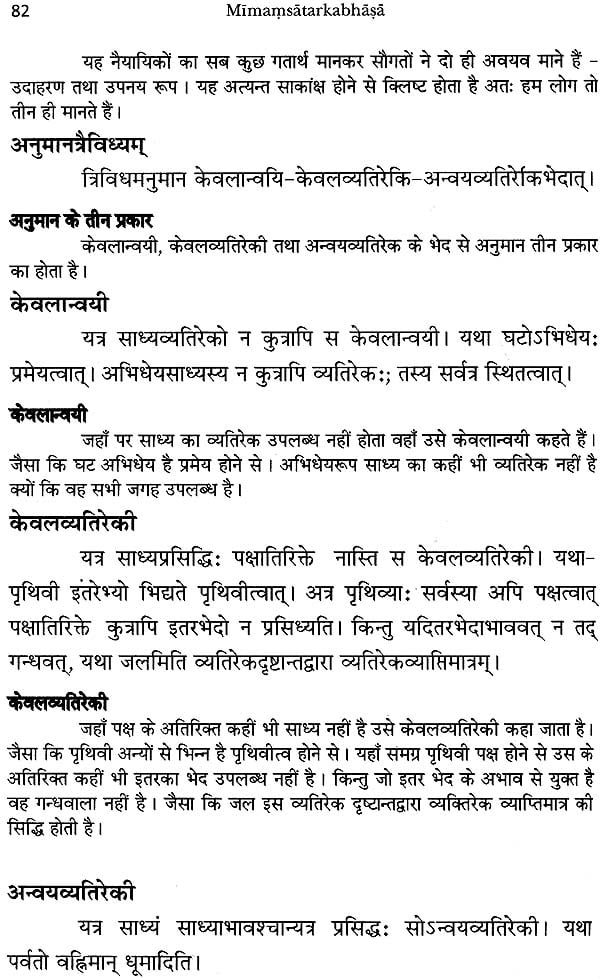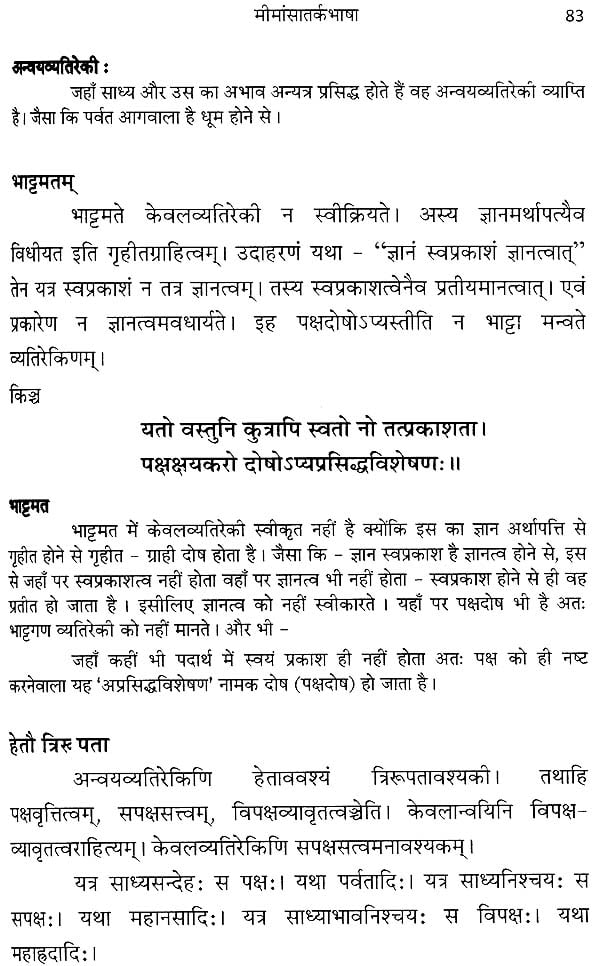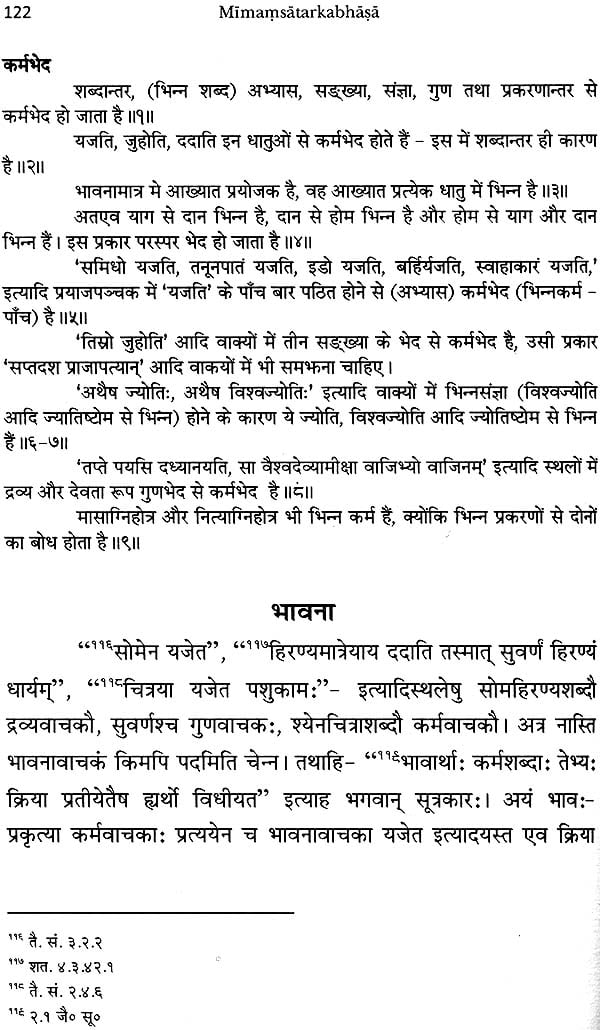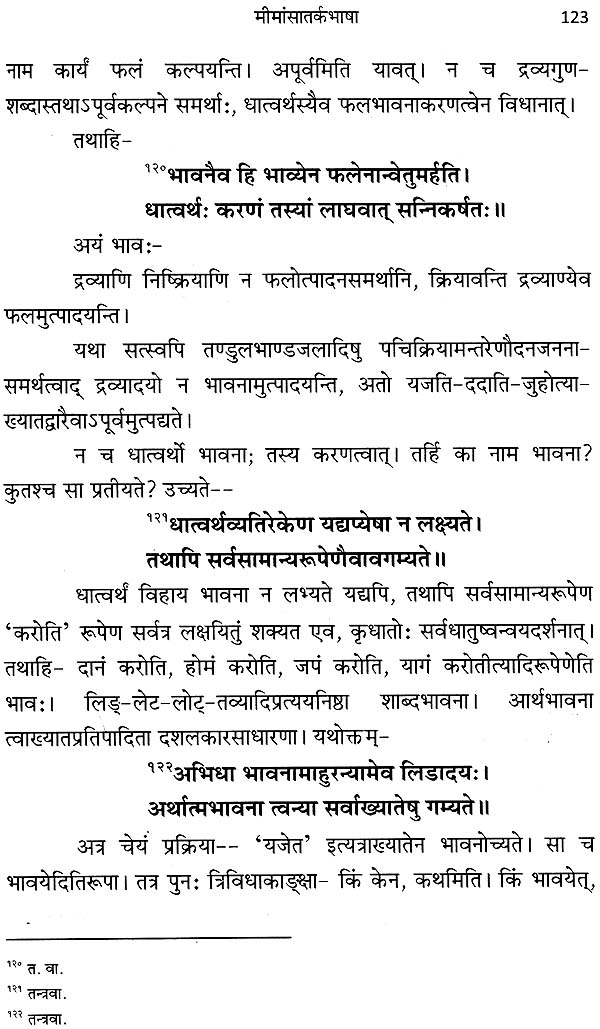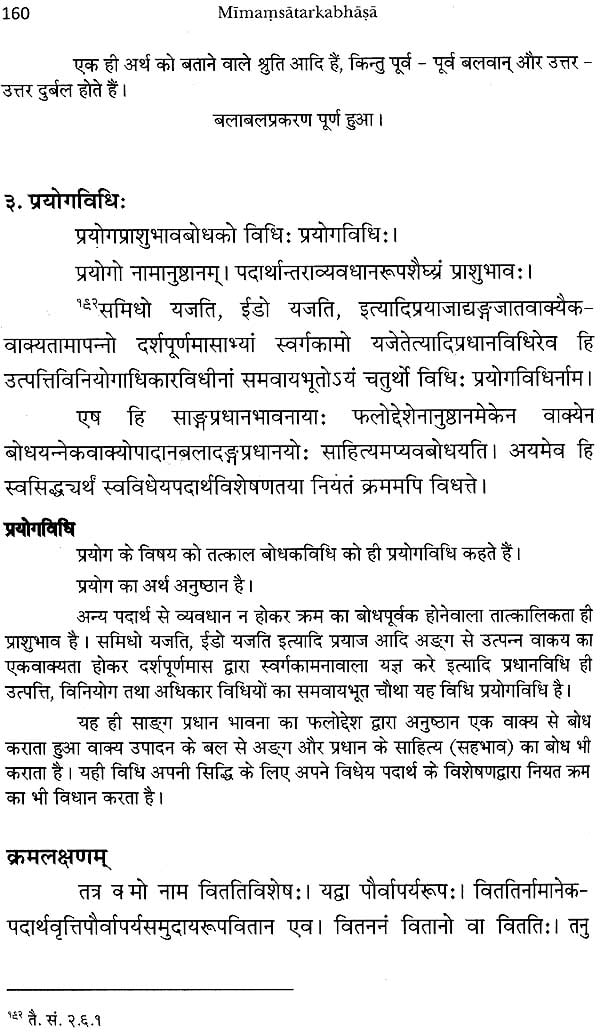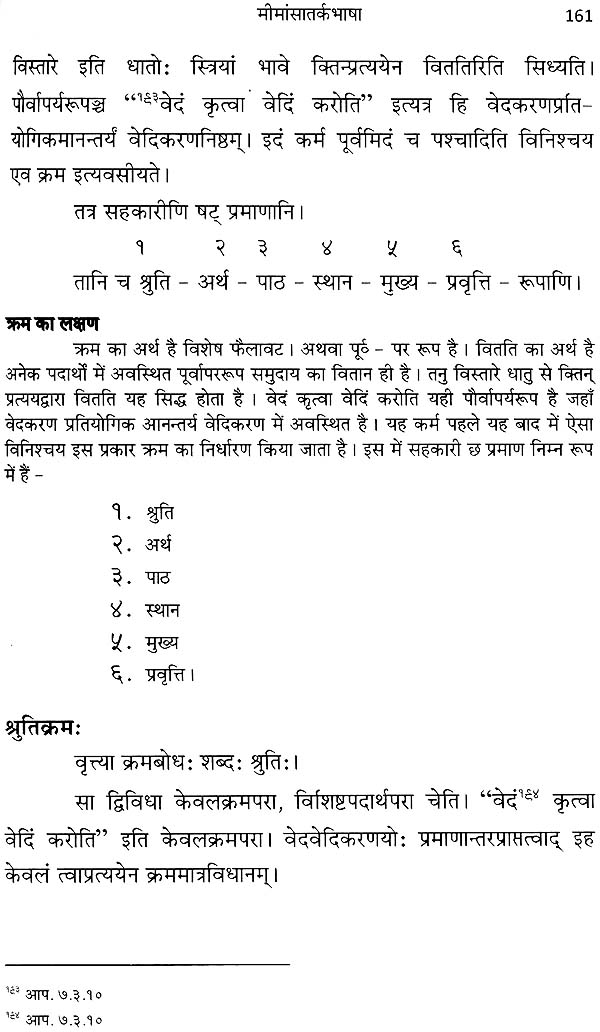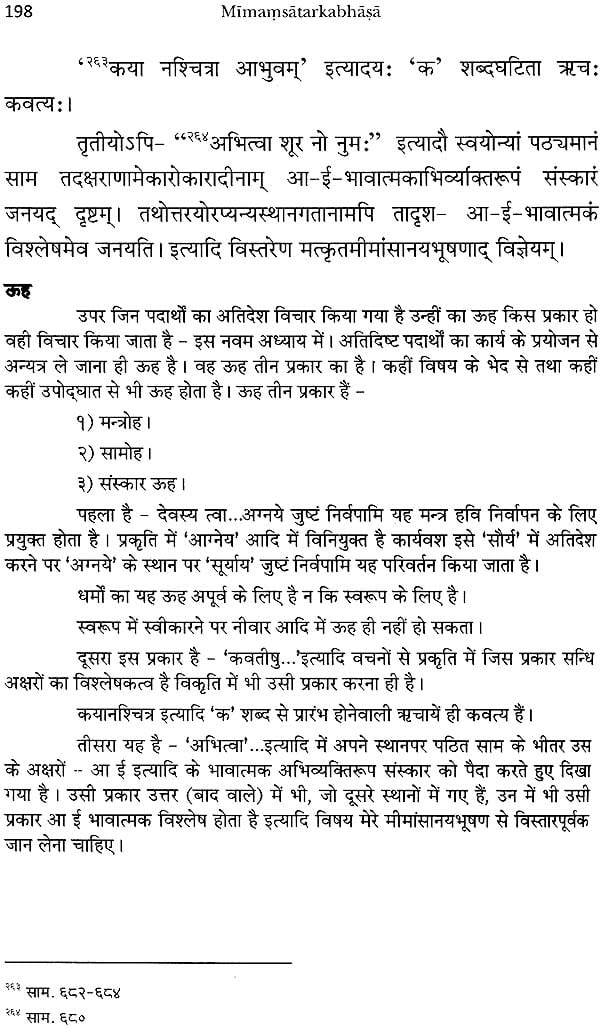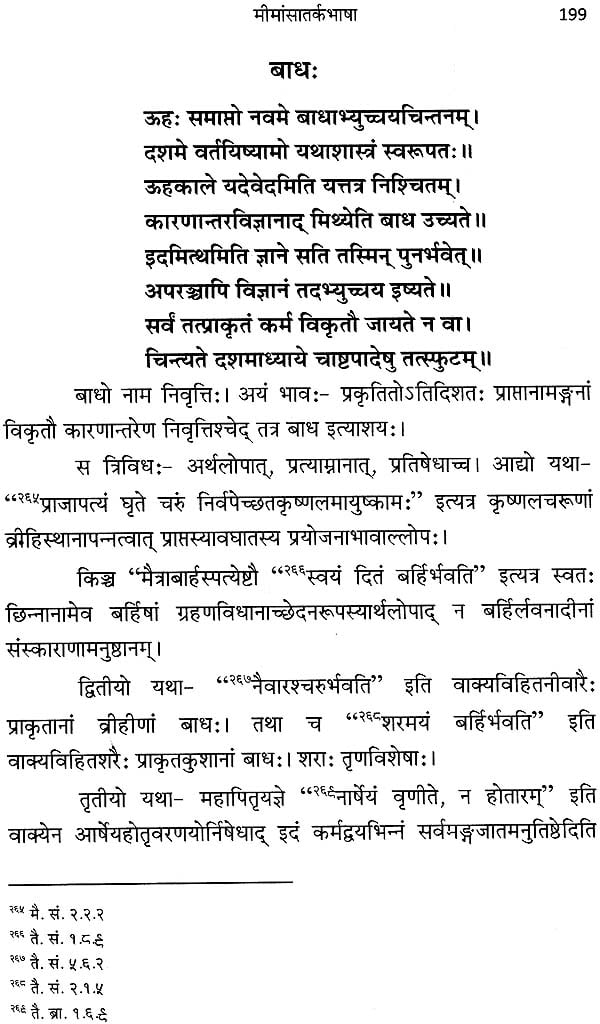मीमांसातर्क भाषा: Mimamsa Tarka Bhasa
Book Specification
| Item Code: | NZL124 |
| Author: | डा. शारदा पौडेल (Dr. Sharda Paudel) |
| Publisher: | Indian Mind, Varanasi |
| Language: | Sanskrit Text with Hindi Translation |
| Edition: | 2017 |
| ISBN: | 9788193279403 |
| Pages: | 207 |
| Cover: | Hardcover |
| Other Details | 9.0 inch X 6.0 inch |
| Weight | 410 gm |
Book Description
The author of Mimamsatarkabhasa is Prof. Dr. Kashinath Nyaupane. Having learnt the entirety of Indian philosophy from the great scholar Swami Yogindrananda in Varanasi for twelve years, Prof. Nyaupane's knowledge of the Indian philosophy is unparalleled. He has committed his life to the advancement of the schools of philosophy such as Mimamsa, Vedanta, Nyaya, Jaina, Bauddha, Carvaka and so on. He is currently the Head of the Buddhist Studies Department, Director of the Foreign Affairs Council as well as the Executive Director of the Research Center of Nepal Sanskrit University.
He has written and published books such as Mimamsa- padarthavijnanam, Mimamsanayabhusanam, Lahidikriya- yogasamhita, Tarinivarivasya and so on. He has also translated books such as Kalacakratantram, Guhyasamajatantram, Hevajratantram, U ttaratan tram , Chandamaharoshanatantram, Mahamay tan tram, Tattvopaplavasimha ofJayarashi Bhatta and so on. Moreover, he has recently finished editing and translating the entire Pramanavartika with Dharmakirti's own commentary as well as Manorathanandi's.
He has been working on Satasahasrika Prajnaparamita for the last five years, collecting and editing the manuscripts that had been scattered all over the world and locked up in archives and University libraries, and is going to publish it in 20 volumes by 2018.
About the Editor and Translator
The translator and editor of this book, Dr. Sharada Poudel, is a great scholar of Philosophy, especially Buddhism. She did her research on the commentary by Kamalasila on Vajracchedika Prajnaparamita, and thus is the first Ph.D. holder of Lumbini Buddhist University. Currently, she is a faculty of Lumbini Buddhist University in Lumbini, Nepal. She has been decorated with numerous awards and felicitations due to her excellence ill the field of Indian Philosophy.
Introduction
Mimamsa, among the classical schools of Indian thought, has long been subjected to relative neglect. The number of Mimansaka-s and great Mimamsa scholars, particularly of the Prabhakara or Murari Mishra schools of purva Mimamsa, became rare at the turn of the century. Partly because of this, and partly for other reasons, Mimamsa was felt unattractive by aspiring students of Indian thought- including students who received training in the indigenous system of education as well as those who were trained in the modern European system of education also. Fortunately, there have been, though very few, notable instances of Apavada or exceptions to this general truth. In recent times we found in Varanasi one such instance in the pair of Svami Yogindrananda and Dr. Kashinath Nyaupane. Though not a Mimamsaka himself, this Sarvatantra-svatantra Svamiji endeavored to breathe new life to the tradition of Mimamsa. He had very clear perception, it seems, as to what was to be done. And he found a God sent instrument in Kashinath. He reared up this extremely competent and willing student into a confident and committed scholar of Purva Mimamsa with equal zeal for teaching and, what is more important, writing. Till now Kashinath is more of an adept in Bhatta Mimamsa. If providence granted Svamiji a little longer life then through Kashinath he would have done something for the much needed revival and advancement of Prabhakara Mimamsa also.
It was the desire of Svamiji that there should be a Mimamsa Tarkabhasa. Tarkabhasa texts that already existed in the traditions like Bauddha, Jaina and Vaisesika were known for their usefulness. It is sad for us and doubly so for the author of the present text, that Svamiji did not Jive to see with what love and commitment his beloved disciple turned his desire for a Mimamsatarkabhasa into reality. If he were alive, he would certainly have written this introduction and that itself would have been a great contribution to Mimamsa literature.
Tarkabhasa texts belong to the class of works called samgraha grantha. Usually Tarkabhasa type texts are needed to introduce young beginners to a particular system of thought. Therefore it is necessary that such texts should be both comprehensive and relatively easy. For this reasons, tarkabhasa texts were written in different schools even though there existed samagrahagrantha-s which were either too difficult though comprehensive or simple but not really comprehensive. Thus, Kesava Misra had to write Tarkabhasa to introduce Nyaya Vaisesika thought though there existed Prasasthadeva's Padarthadharmasamgrahah. For similar reasons, Moksakara Gupta's Bauddha Tarkabhasa is still felt necessary thought there is far more comprehensive Tattvasamgraha. In Prabhakara Mimamsa school there was Prakaranapancika but it could not serve the purpose for which Ramanujacarya had to write his Tantrarahasya. And in Bhatta Mimamsa even the works of Parthasarathi could not render unnecessary the works like Manameyodaya or Bhatta- cintamani. Svamiji knew that at least these and a number of similar texts were already there. Kashinath who himself has read all these books to which he has made copious reference could not be unaware either that these works existed. And still a work had to be written not simply with the title Mimamsa Tarkabhasa, but fulfilling the need which a text of such type is expected to serve. Svamiji seems to have wanted an authentic, simple and comprehensive introduction to Mimamsa which would be suitable for the beginners, and further the text should combine the virtues of the types of texts mentioned above and avoid their shortcomings. In Mimamsa such introductoty text should in the first place cover laukika as well as Mimamsa Pramana-s, Mimamsa Nyaya-s and ordinary as well as Mimamsa prameya-s. Again, it should include relevant rival views. Laugaksibhaskara's Arthasamgrahah is not comprehensive as it entirely omits the discussion of laukika of Mimamsa pramana and nyaya. On the other hand Gagabhatta's Bhattacintamani, written in the difficult style of Navanyaya, is not quite suitable for beginners. Manameyodaya also omits special Mimamsa topics including Mimamsa prameya, Mimamsa Nyaya and Mimamsa pramana. However the English Introduction of this text which has been published by Adyar Library contains a list of relevant rival views. Kashinath includes such information in the body of the text itself. In sum, Kashinath's work can compare.
Favourably with Kamalakara Bhatta-s Mimamsakutuhalam which was edited by the renowned Mimamsa scholar Pattabhiram Sastri and published in 1987 by Sampurnananda Samskrta University, this book is an ideal text for the beginners. But the topics, which have been discussed in the present text, did not receive equal attention in Mimamsakutuhalam. Further, Kashinath defends the more conservative Mimamsa position in respect of themes like Isvara and Moksa; and in doing so he differs from Kamalakara Bhatta and hence Pattabhirama-Sastri who in his Introduction to Mimamsa- kutuhalam defended its author. Some may think that a text for the beginners should simply record the controversies without betraying preference for any particular position. But it seems that even for the beginners the best author is he who has a stand of his own and strength of conviction. In addition he should have the fairness enough to correctly record the views of the rivals. The author of the present text fully satisfies this description. He had collected relevant information from almost an exhaustive number of authentic sources and presented them in lucid Samskrta. The text has been written partly in prose and partly in verse and this has vastly enhanced the readability of the text. In conclusion it must be admitted, however, that for a complete introduction to Bhatta Mimamsa thought even this Mimamsatarkbhasa is not sufficient. It is therefore desirable that the present work should be read or taught along with the same author's Mimamsapadarthavijnanam and preferably Mimamsanaya- bhusanam.
